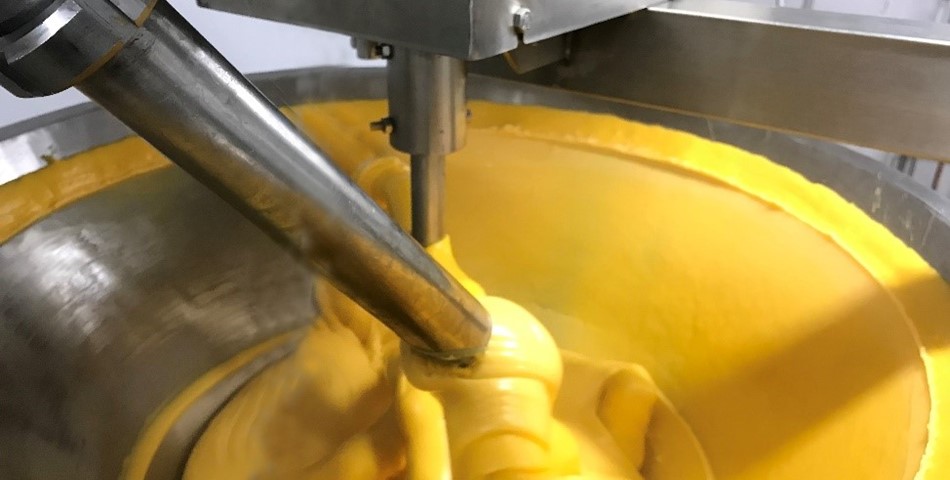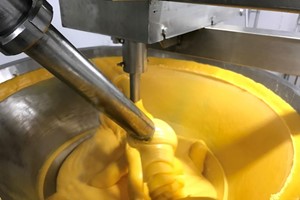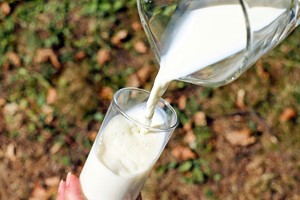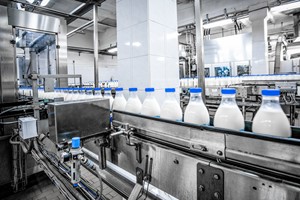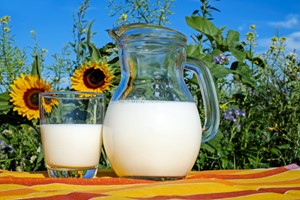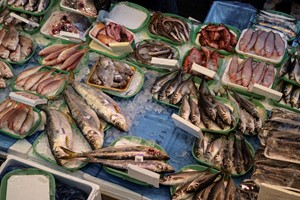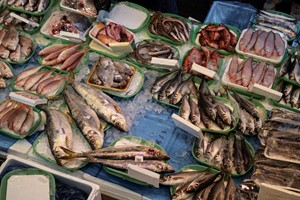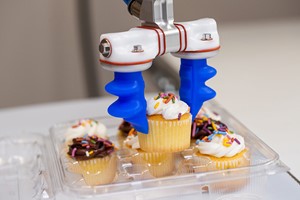The dairy industry is certainly a fast-growing market in the food manufacturing and processing sector in Saudi Arabia. The increased demand for dairy products has been forecasted for this field in the coming years, as milk products are part of the Kingdom’s plan to ensure food self-sufficiency. Moreover, the KSA population craves additional dairy products since the demand is nowadays growing alongside the global trend of consuming healthier dishes. As a consequence, diary plants must find new ways to produce a larger amount without laying the quality aside.
This is precisely a prominent goal for one of the most famous companies established in the Kingdom, “The National Food Industries Company Ltd.”.
Its brand LUNA produces dairy at its largest processing and packing site in the Middle East, the Jeddah factory.
Eyes on the future
The wide variety and high volumes of processed food manufactured in Jeddah, every day, imply a complete control of all processes.
Part of LUNA’s Industry 4.0 ambitious plan is to generalize automated processes and to continuously implement modern technologies on production lanes.
Mr. Alexander VARGHESE, Electrical Manager at the LUNA plant, has recently stepped up to the challenge.
His long-term project is to provide a fully automated filling line for their production of Cheddar Blocks.
The well-known brick-shape cheddar is produced in an ultra-modern facility that has a production capacity of 21 Tons per day.
To achieve such a huge quantity of block cheese, LUNA must have perfect control of its Cheese line. Particularly at the last stage of the chain, the packaging.
To fill up 18.000 blocks per day, the melted cheese passes through a funnel-shaped vessel which pours the cheese into the final plastic bag to be lastly packed into its branded cardboard.
The vessel is currently filled by batch. To ensure a smooth process, the volume of cheese inside the stirred funnel is measured via a Radar level sensor installed by VEGA.
The radar level sensor reliably measures the cheese regardless of the presence of buildup or the agitator. This provides operators with accurate information on the amount of cheese inside the funnel.
The next step will be to rely completely on the sensor to control the filling of the vessel.
In this way, Mr. Varghese will be able to optimize the flow of cheese coming from the batch cooker and dispatch the product to different filling lines.
Innovative technology for better reliability
Mr. Varghese remembers the difficulties encountered while measuring the cheese.
Lasers, Photocell’s sensors, or Contact sensors (i.e., conductive probes) were often going to fail due to the demanding nature of the process. Vapors, condensates, buildups due to splashes and the movement of the agitator were creating false signals and challenging all such sensors. Hopefully, Mr. Varghese was aware of an alternative solution. More reliable, contactless, and unaffected by buildups the VEGAPULS 64, a Radar level sensor.


Radar Level transmitters from VEGA, the perfect technology against moisture and buildup
The use of radar has revolutionized level measurement technology. For more than 25 years now, VEGA, the German instrument manufacturer, has been setting milestones over and over again in this field. Nowadays, greater than 550.000 radar sensors from VEGA work reliably in applications of diverse levels worldwide.
Radar level sensors use microwaves that are pulsed from the sensor antenna to the product. The waves bounce back to the product surface and reach out to the sensor. Like a tennis ball throws against a wall.
The sensor measures the time from emission to reception of the traveling wave and determines the level of the tank. This measuring principle allows to monitor the level of product from distance and therefore is not in contact with the cheese.
Being a contactless measurement brings many advantages: hygiene protocols are naturally respected as it reduces the exposure of the sensor from splashes, and thus facilitates cleaning procedures.
These are not the only advantages of Radar sensors. This instrument is additionally unaffected by buildups, moisture, temperature fluctuations and can measure very close to the media if required (no dead zone)
Furthermore, this technology is continuously improving. With a higher frequency, 80 GHz Radars are now capable of measuring with a very narrow signal. Focusing the waves makes the installation in tanks with internals such as agitators, heating-coils, pumps, etc. effortless.
The National Food Industries Company Ltd. is completely satisfied with this technology and is planning to upgrade more applications with Radars: milk powder, raw milk, tomato paste, and even wastewater.
National Food Industries Company Limited




